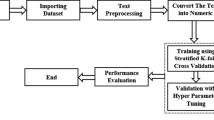Abstract
Since the spread of the coronavirus disease (COVID-19), a huge amount of information about the virus has been published over the internet and social networks. Along with such, there is an uncontrolled spread of harmful misinformation. This paper aims to review three state-of-the-art datasets of misinformation on COVID-19 and present experimental comparison on these datasets using various Neural Network architectures. The datasets comprise data from various sources such as articles from trusted websites and posts and tweets from social media. As for the algorithms, different Neural Network architectures (ANN, CNN, RNN, and LSTM) are used to compare the reviewed datasets to detect misinformation about COVID-19. The experiments are conducted on the datasets individually and merged together to generate models with larger input dataset. The results show, in terms of accuracy, that feedforward Artificial Neural Network (ANN) outperformed other more complicated Deep Learning methods such as Convolutional Neural Networks (CNNs) and Recurrent Neural Networks (RNNs). Moreover, merging the datasets has resulted in better performance in comparison to the individual datasets. In terms of execution time, ANN showed better performance with shorter training time.
Access this chapter
Tax calculation will be finalised at checkout
Purchases are for personal use only
Similar content being viewed by others
References
Coronavirus disease (COVID-19). https://www.who.int/emergencies/diseases/novel-coronavirus-2019. Accessed 1 May 2022
Social media use during COVID-19 worldwide - statistics & facts | Statista. https://www.statista.com/topics/7863/social-media-use-during-coronavirus-Covid-19-worldwide/#dossierKeyfigures. Accessed 15 Dec 2021
Baldwin, R., Weder, B., Mauro, D.: Economics in the Time of COVID-19. www.cepr.org. Accessed 15 Dec 2021
Fighting misinformation in the time of COVID-19, one click at a time. https://www.who.int/news-room/feature-stories/detail/fighting-misinformation-in-the-time-of-Covid-19-one-click-at-a-time. Accessed 15 Dec 2021
Cinelli, M., et al.: The COVID-19 social media infodemic. Sci. Reports 10(1) (2020). https://doi.org/10.1038/s41598-020-73510-5
Elhadad, M.K., Li, K.F., Gebali, F.: Detecting misleading information on COVID-19. IEEE Access 8, 165201–165215 (2020). https://doi.org/10.1109/ACCESS.2020.3022867
Patwa, P., et al.: Fighting an Infodemic: COVID-19 Fake News Dataset. https://doi.org/10.1007/978-3
Flach, P.A.: Machine Learning The Art and Science of Algorithms that Make Sense of Data (2012)
Alenezi, M.N., Alqenaei, Z.M.: Machine learning in detecting COVID-19 misinformation on Twitter. Future Internet 13(10), 244 (2021). https://doi.org/10.3390/fi13100244
Bafandeh, S., And, I., Bolandraftar, M.: Application of K-Nearest Neighbor (KNN) approach for predicting economic events: theoretical background. J. Eng. Res. Appl. 3, 605–610. www.ijera.com. Accessed 18 Dec 2021
Hastie, T., Tibshirani, R., Friedman, J.: The Elements of Statistical Learning (2009). https://doi.org/10.1007/978-0-387-84858-7
Granik, M., Mesyura, V.: Fake news detection using naive Bayes classifier. In: 2017 IEEE 1st Ukraine Conference on Electrical and Computer Engineering UKRCON 2017 - Proceedings, pp. 900–903 (2017). https://doi.org/10.1109/UKRCON.2017.8100379
Ullah, A.R.S., Das, A., Das, A., Ashad Kabir, M., Shu, K.: A Survey of COVID-19 Misinformation: Datasets, Detection Techniques and Open Issues (2021)
Cortes, C., Vapnik, V.: Support-vector networks. Mach. Learn. 20(3), 273–297 (1995). https://doi.org/10.1007/BF00994018
Dharawat, A., Lourentzou, I., Morales, A., Zhai, C.: Drink bleach or do what now? Covid-HeRA: a dataset for risk-informed health decision making in the presence of COVID19 misinformation (2020). https://arxiv.org/abs/2010.08743v1. Accessed 20 Dec 2021
Murphy, K.P.: Machine Learning A Probabilistic Perspective (2012)
Dadgar, S., Ghatee, M.: Checkovid: A COVID-19 misinformation detection system on Twitter using network and content mining perspectives (2021)
Choudrie, J., Banerjee, S., Kotecha, K., Walambe, R., Karende, H., Ameta, J.: Machine learning techniques and older adults processing of online information and misinformation: a covid 19 study. Comput. Hum. Behav. 119, 106716 (2021). https://doi.org/10.1016/j.chb.2021.106716
Perrio, C., Madabushi, H.T.: CXP949 at WNUT-2020 Task 2: Extracting Informative COVID-19 Tweets – RoBERTa Ensembles and The Continued Relevance of Handcrafted Features, pp. 352–358 (2020). https://doi.org/10.18653/v1/2020.wnut-1.48
Zhou, X., Mulay, A., Ferrara, E., Zafarani, R.: ReCOVery: A multimodal repository for COVID-19 news credibility research. In: Proceedings of the International Conference on Information and Knowledge Management, pp. 3205–3212 (2020). https://doi.org/10.1145/3340531.3412880
Swire-Thompson, B., Lazer, D.: Public health and online misinformation: challenges and recommendations. Annu. Rev. Public Health 41, 433–451 (2019). https://doi.org/10.1146/ANNUREV-PUBLHEALTH-040119-094127
Yim, W.W., Yetisgen, M., Harris, W.P., Sharon, W.K.: Natural language processing in oncology: a review. JAMA Oncol. 2(6), 797–804 (2016). https://doi.org/10.1001/JAMAONCOL.2016.0213
Mujtaba, G., et al.: Clinical text classification research trends: systematic literature review and open issues. Expert Syst. Appl. 116, 494–520 (2019). https://doi.org/10.1016/J.ESWA.2018.09.034
Agarwal, A., Dixit, A.: Fake news detection: an ensemble learning approach. In: Proceedings of the International Conference Intelligent Computing Control System ICICCS 2020, pp. 1178–1183 (2020). https://doi.org/10.1109/ICICCS48265.2020.9121030
Sharma, R., Agarwal, V., Sharma, S., Arya, M.S.: An LSTM-based fake news detection system using word embeddings-based feature extraction. In: Fong, S., Dey, N., Joshi, A. (eds.) LNNS, vol. 154, pp. 247–255 (2021). https://doi.org/10.1007/978-981-15-8354-4_26/COVER
Author information
Authors and Affiliations
Corresponding author
Editor information
Editors and Affiliations
Rights and permissions
Copyright information
© 2022 The Author(s), under exclusive license to Springer Nature Switzerland AG
About this paper
Cite this paper
Alajramy, L., Jarrar, R. (2022). Using Artificial Neural Networks to Identify COVID-19 Misinformation. In: Spezzano, F., Amaral, A., Ceolin, D., Fazio, L., Serra, E. (eds) Disinformation in Open Online Media. MISDOOM 2022. Lecture Notes in Computer Science, vol 13545 . Springer, Cham. https://doi.org/10.1007/978-3-031-18253-2_2
Download citation
DOI: https://doi.org/10.1007/978-3-031-18253-2_2
Published:
Publisher Name: Springer, Cham
Print ISBN: 978-3-031-18252-5
Online ISBN: 978-3-031-18253-2
eBook Packages: Computer ScienceComputer Science (R0)




